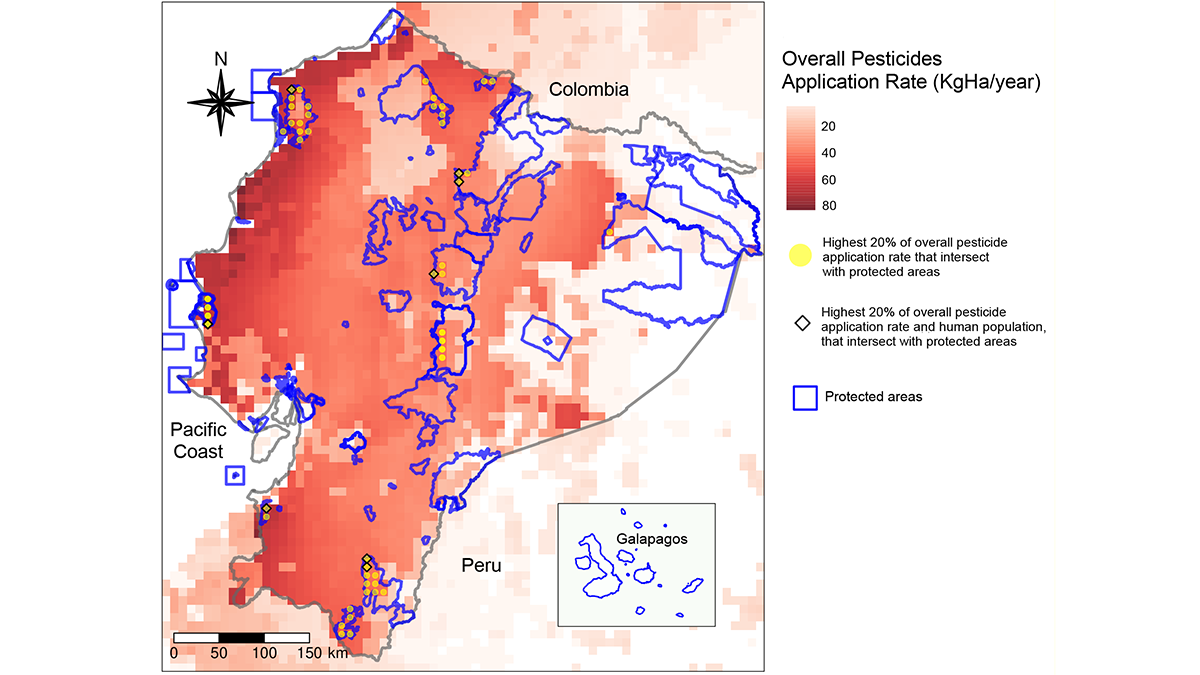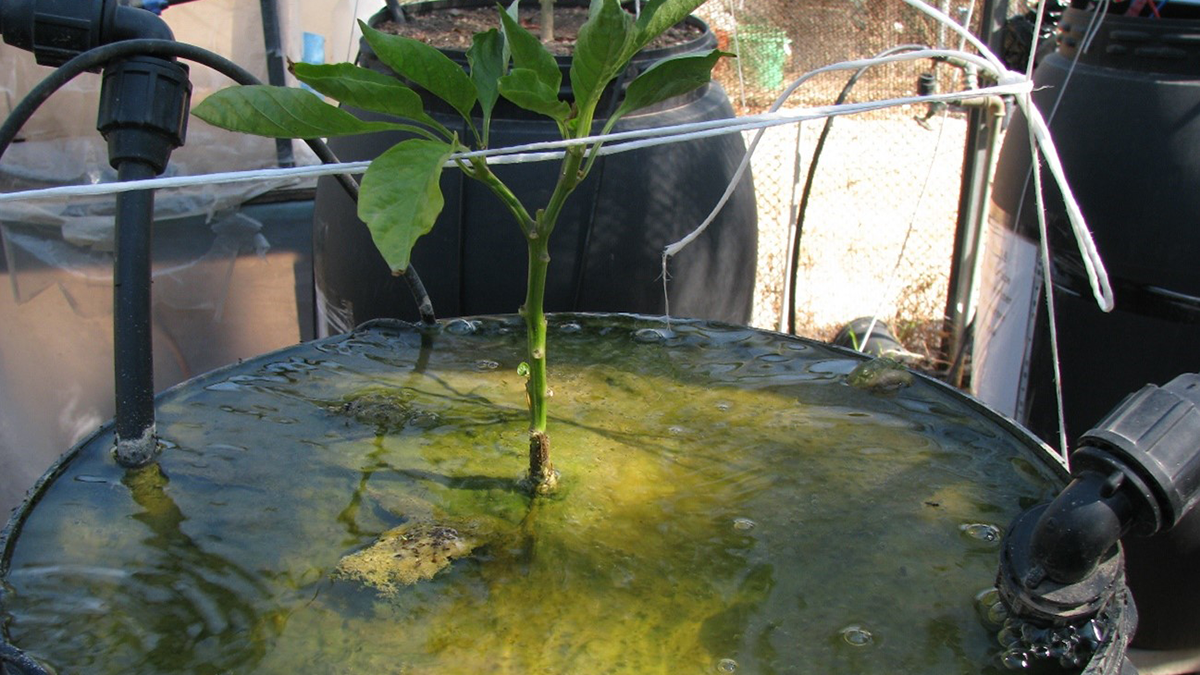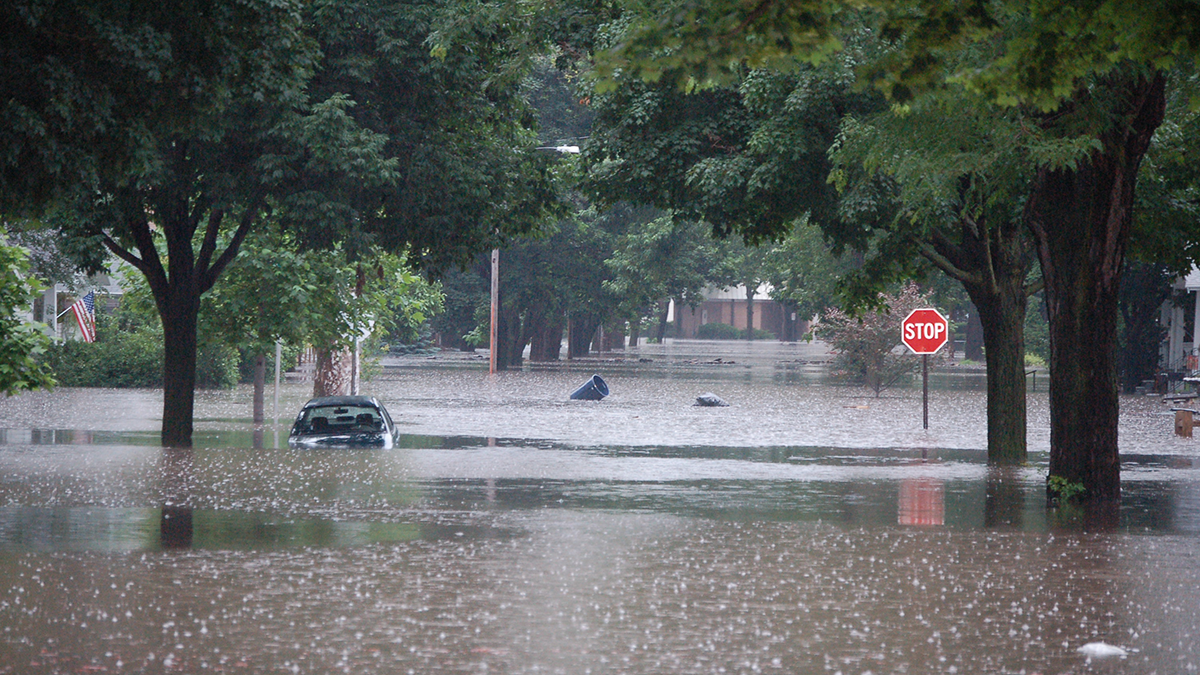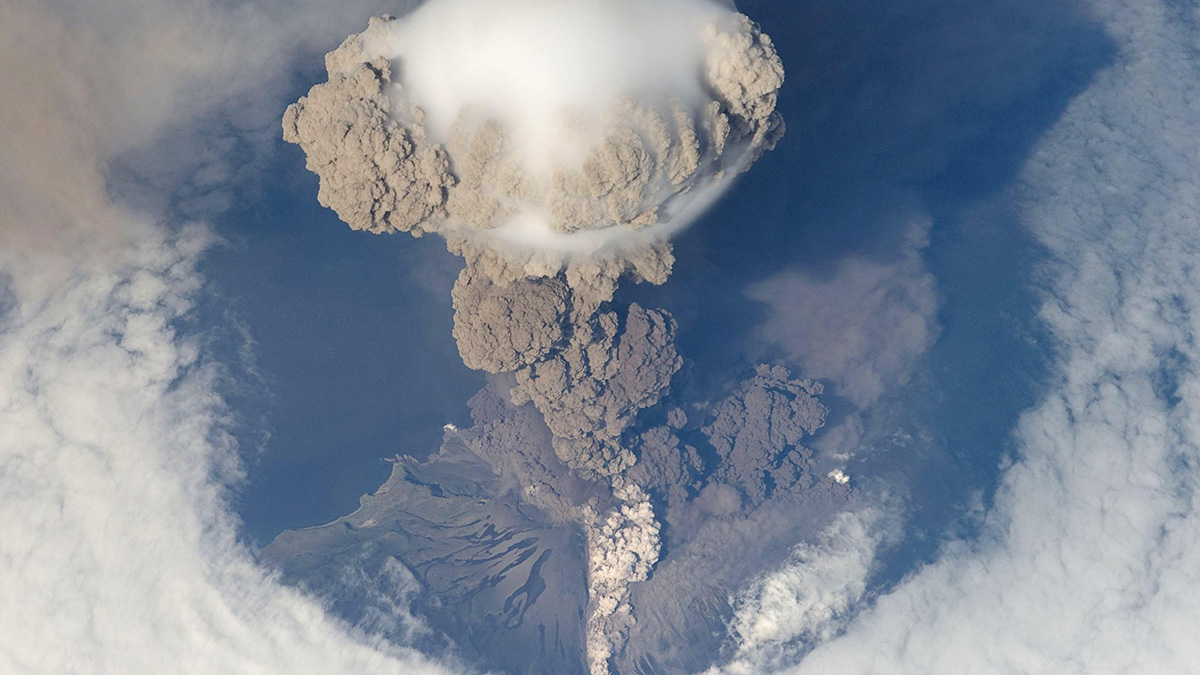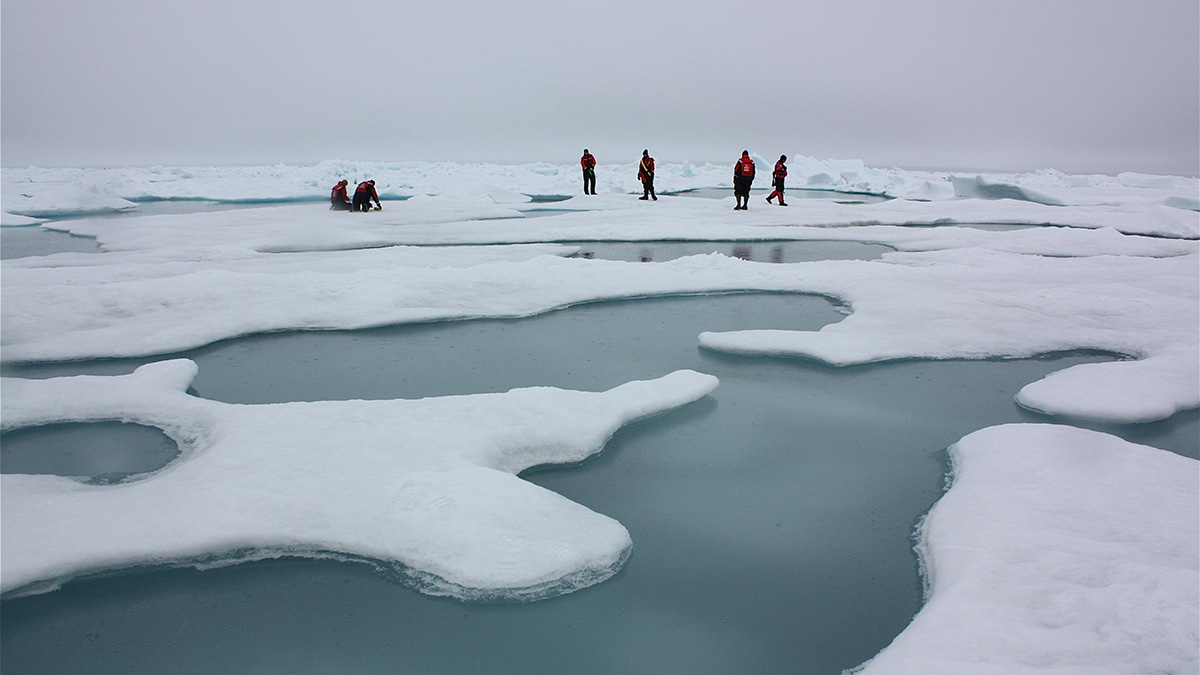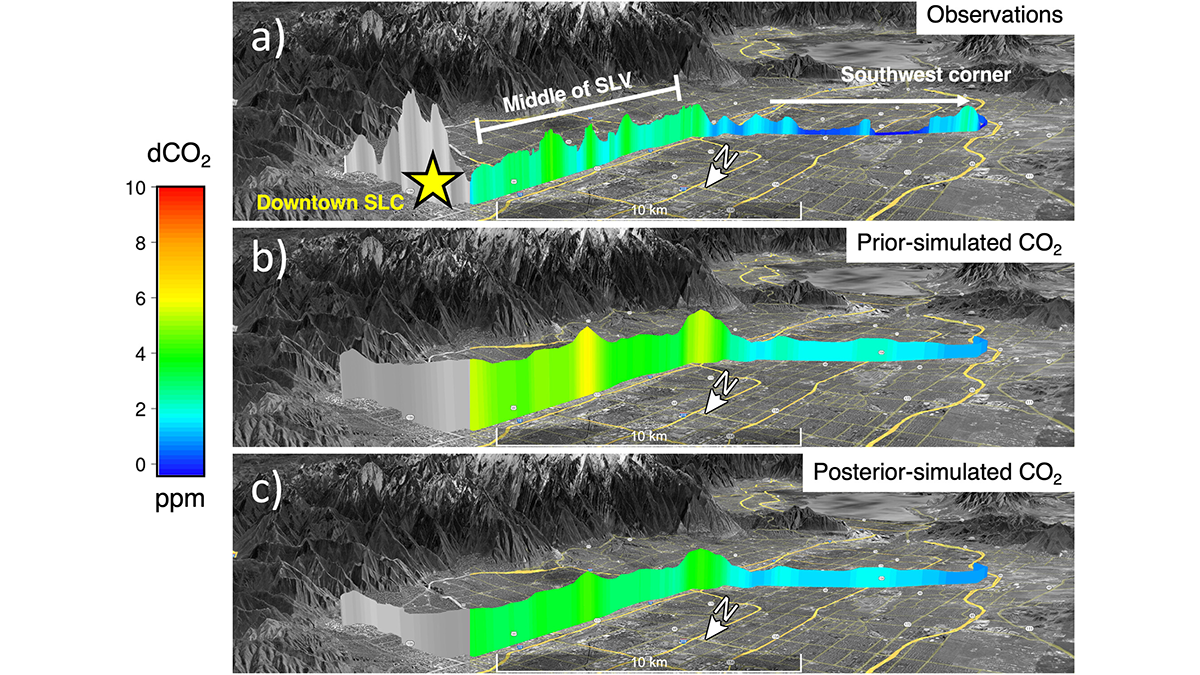La exposición a pesticidas puede afectar la salud humana y de los ecosistemas. Una investigación reciente aplica modelos cartográficos en Ecuador, los cuales pueden ser exportados a otras escalas para limitar estos impactos adversos en otras regiones.
Modeling
Mapping Intersections of Pesticides, Protected Areas, and People
Pesticide exposures can impact human and ecosystem health, and new research uses a modeling approach applied to Ecuador that can be scaled and exported to limit negative impacts in other regions.
Using Bayesian Inference to Improve Sediment-Transport Models
A new Bayesian approach is used for the estimation and uncertainty quantification of unobservable parameters required to model tracer evolution in ocean sediment transport and tracer concentrations.
Air Flow Dynamics in Wet Soils: Challenges and Knowledge Gaps
Modeling air flow in wet porous media relies on quantifying the combined role of fluid and media properties and flow dynamics on the microscale displacement mechanisms and macroscale unstable flow.
Unlocking the Secrets of Floods: Breakthroughs in Riverine and Coastal Modeling
To enhance flood modeling, it is imperative to gain a comprehensive understanding of the causative mechanisms and cutting-edge models and tools, while also acknowledging their uncertainties.
How to Find a Volcanic Diamond Mine
New 3D modeling illustrates the mechanism behind the intriguing volcanic eruptions that bring diamonds to the surface.
Volcanoes’ Future Climate Effects May Exceed Standard Estimates
Future releases of sulfur dioxide from volcanoes will likely be higher than the reconstructed historical levels currently used for climate predictions.
Sea Ice Is Going, but When Will It Be Gone?
A pair of studies demonstrate the uncertainty over when the Arctic will become seasonally sea ice free.
Tracking Human CO2 Emissions from Medium-Sized Cities
Atmospheric inverse models, combined with observations, successfully tracked modest CO2 emission reductions in Salt Lake City during the first COVID-19 lockdown in 2020.


